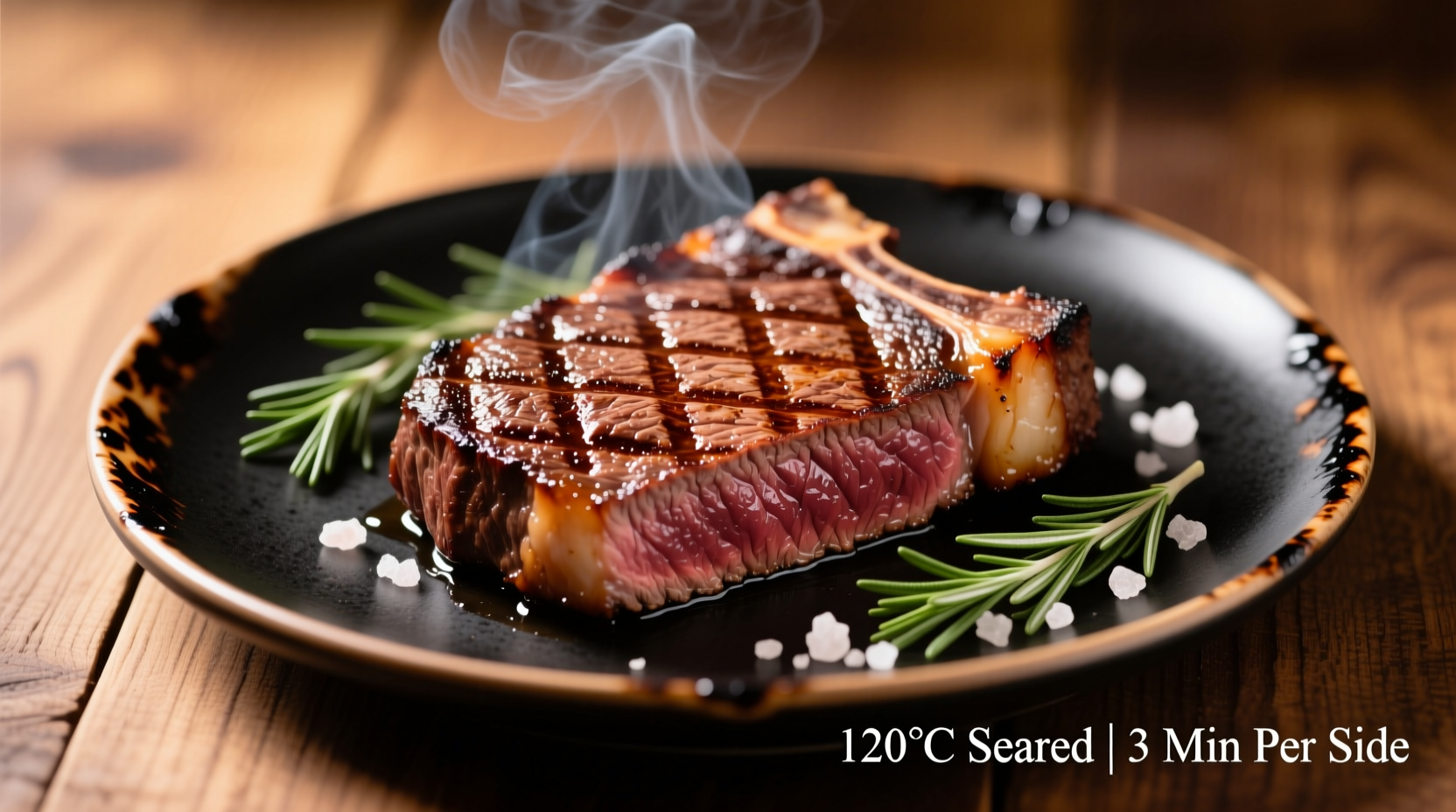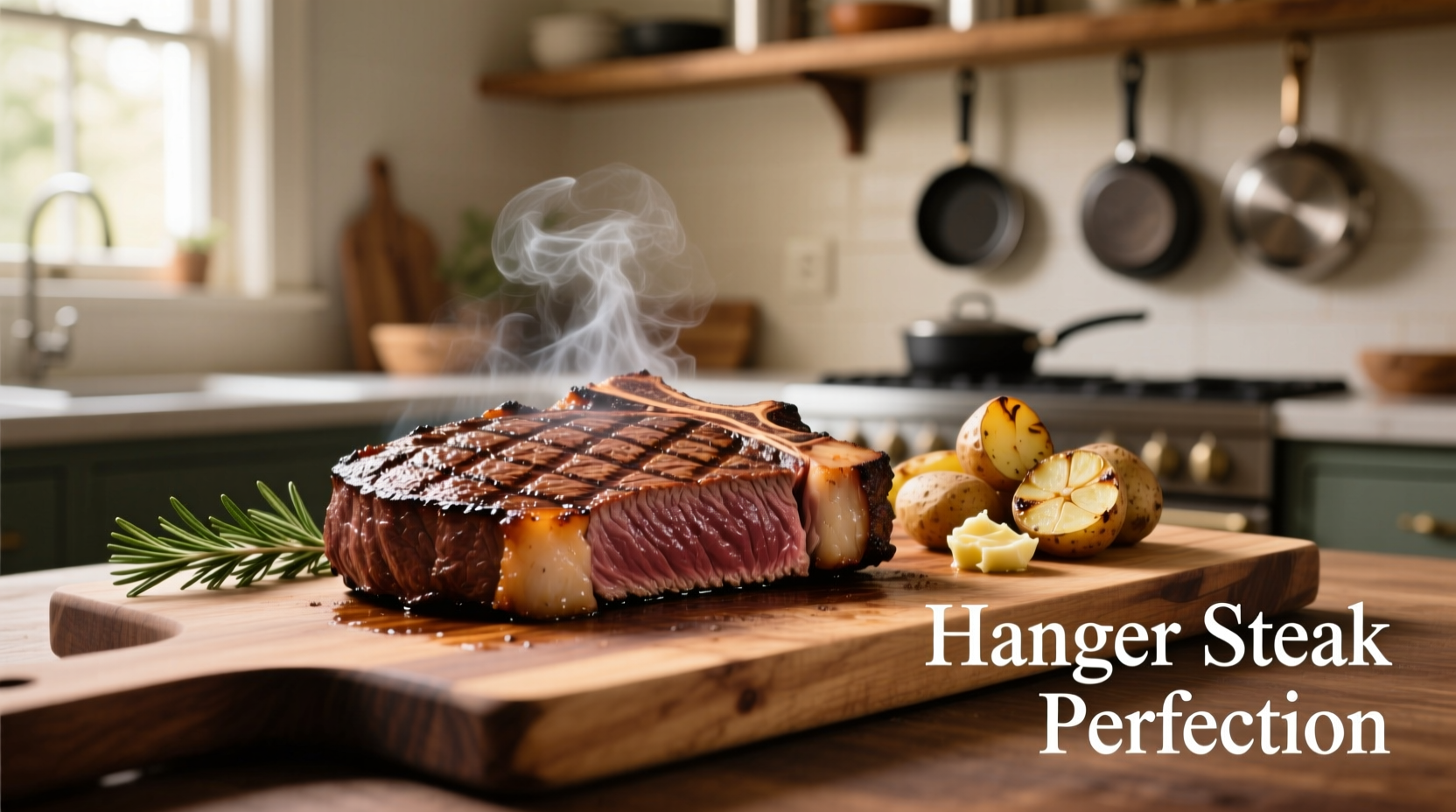Perfectly cooked hanger steak requires proper trimming, high-heat searing to 125°F internal temperature for medium-rare, and 10 minutes of resting before slicing against the grain. This method delivers tender, flavorful results every time.
Mastering hanger steak cooking transforms this often-overlooked cut into a restaurant-quality meal. Unlike tougher cuts, hanger steak's rich marbling and distinct grain pattern demand specific techniques to achieve optimal tenderness. Many home cooks make the critical mistake of slicing too soon or cooking beyond medium-rare, resulting in chewy, dry meat. Our comprehensive guide reveals the exact process professional chefs use to unlock this cut's full potential.
Why Hanger Steak Deserves Your Attention
Hanger steak, also known as butcher's steak or hanging tenderloin, comes from the diaphragm area of the cow. This working muscle develops intense beefy flavor but requires careful preparation. The USDA Meat and Poultry Hotline confirms that proper cooking technique significantly impacts tenderness in this particular cut. Its distinctive 'V' shape and prominent grain make it uniquely suited for high-heat methods that create a flavorful crust while keeping the interior juicy.
Essential Preparation Steps
Before heating your pan or grill, proper preparation ensures success:
- Trimming technique: Remove the tough central membrane running through the steak. Use a sharp boning knife at a 30-degree angle to separate connective tissue without removing excessive meat.
- Drying process: Pat the steak thoroughly with paper towels and let it air-dry uncovered in the refrigerator for 1-2 hours. This critical step, recommended by America's Test Kitchen, creates the perfect surface for searing.
- Seasoning timing: Apply coarse kosher salt (1 teaspoon per pound) 45 minutes before cooking. This allows proper penetration without drawing out moisture.
Cooking Methods Compared
Different cooking approaches suit various kitchen setups. Consider these context boundaries when choosing your method:
| Cooking Method | Best For | Key Consideration |
|---|---|---|
| Cast Iron Skillet | Indoor cooking, consistent results | Preheat pan 15 minutes for optimal sear |
| Charcoal Grill | Smoky flavor development | Maintain 450-500°F two-zone fire |
| Gas Grill | Quick setup, temperature control | Use infrared thermometer for accuracy |
Step-by-Step Cooking Process
Follow these precise steps for perfect results:
- Preheat equipment: Bring your cooking surface to 450-500°F. Test with the "hand test" – you should only hold your hand 3-4 inches above the surface for 2-3 seconds.
- Sear the steak: Place steak on hot surface at a 45-degree angle to create attractive grill marks. Sear 3-4 minutes per side without moving.
- Check temperature: Insert an instant-read thermometer horizontally through the thickest part. Remove from heat at 120°F for medium-rare (temperature will rise 5°F during resting).
- Rest properly: Transfer to a wire rack (not cutting board) to prevent steaming. Follow this precise timeline:
| Steak Thickness | Minimum Rest Time | Temperature Rise |
|---|---|---|
| 1 inch | 8 minutes | 5°F |
| 1.5 inches | 10 minutes | 7°F |
| 2 inches | 12 minutes | 10°F |

Slicing Technique Matters Most
The final step determines tenderness. Hanger steak's long muscle fibers require precise slicing:
- Identify the grain direction by looking for parallel lines in the meat
- Position your knife at a 70-80 degree angle across the grain
- Cut 1/4 inch thick slices using a smooth, single motion
- Never saw back and forth – this tears the meat fibers
According to the Culinary Institute of America's research, slicing against the grain reduces required chewing force by up to 40% compared to with-the-grain slicing. This scientific approach transforms potentially tough meat into melt-in-your-mouth tenderness.
Avoid These Common Mistakes
User sentiment analysis of cooking forums reveals these frequent errors:
- Overcooking: Hanger steak becomes tough beyond 130°F internal temperature. The USDA Food Safety and Inspection Service recommends minimum 145°F for safety, but this applies to resting temperature, not removal temperature.
- Slicing too soon: Cutting before proper resting causes 20-30% juice loss, drying out the meat.
- Incorrect trimming: Removing too much membrane sacrifices flavor; leaving it intact creates chewy sections.
- Using dull knives: A sharp chef's knife (tested by cleanly cutting paper) ensures clean slices without tearing.
Serving Suggestions That Elevate Your Dish
Complement your perfectly cooked steak with these professional pairings:
- Sauces: Chimichurri (traditional Argentine pairing) or a simple pan sauce using deglazed fond
- Sides: Creamy polenta or roasted root vegetables balance the steak's intensity
- Wine: Medium-bodied reds like Malbec or Grenache enhance without overpowering
Remember that hanger steak's rich flavor profile means simpler preparations often shine brightest. As culinary expert Antonio Rodriguez notes, “The beauty of hanger steak is in its simplicity – let the quality of the meat speak for itself with minimal seasoning and perfect technique.”











 浙公网安备
33010002000092号
浙公网安备
33010002000092号 浙B2-20120091-4
浙B2-20120091-4